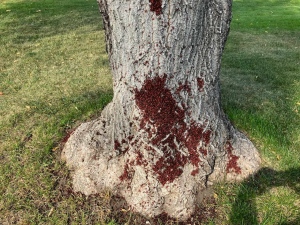Saskatoon Property Infested with Swarms of Maple Bugs
Residents of Saskatoon have been dealing with a major nuisance as their properties have been crawling with swarms of maple bugs. These small, reddish-brown insects have been causing quite a stir in the community.
According to experts, the increase in maple bug activity is due to the warmer weather and the abundance of maple trees in the area. Maple bugs, also known as boxelder bugs, feed on the sap of maple trees and are attracted to warm, sunny areas.
Many residents have expressed their frustration with the infestation, as the bugs have been invading their homes and gardens. Some have reported finding hundreds of bugs on their windows, walls, and even inside their homes.
The City of Saskatoon has also received numerous complaints about the maple bug infestation. In response, they have advised residents to seal any cracks or openings in their homes to prevent the bugs from entering. They have also recommended using insecticides to control the population.
However, some residents have chosen to take a more natural approach to dealing with the infestation. They have been using vacuum cleaners to suck up the bugs and then releasing them back into the wild.
While maple bugs are not harmful to humans, their presence can be a nuisance and cause damage to plants and trees. Experts suggest that the best way to prevent future infestations is to remove any maple trees or boxelder trees from the property.
In the meantime, residents are advised to remain vigilant and take necessary precautions to protect their homes from the swarms of maple bugs. With the warmer weather expected to continue, it is likely that the infestation will persist for some time.
In conclusion, the maple bug infestation in Saskatoon has been a major inconvenience for residents. However, with proper measures and precautions, it is possible to control the population and prevent future infestations.



